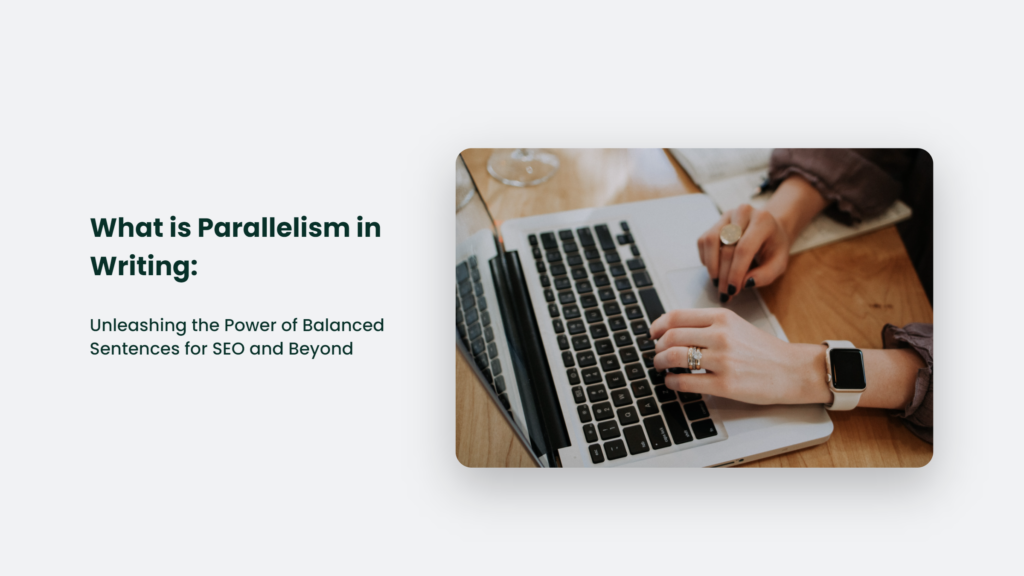Let’s face it: writing can be a daunting task, especially when trying to create engaging and informative content. But what if I told you there’s a secret weapon to help you achieve all this and more? Enter parallelism in writing, a technique that can transform your content into a symphony of balanced sentences that captivate your readers and boost your SEO game. Intrigued? Let’s learn more about what is parallelism in writing!

What is Parallelism in Writing, and Why Should You Care?
Parallelism, also known as parallel structure or parallel construction, is a technique used in writing to create balance and harmony in sentences or elements within a sentence. It’s like the secret sauce that makes your content more powerful, precise, and scannable. But why should you care about parallelism? Here are a few reasons:
- Consistency: Parallelism helps create consistent patterns in your writing, making it easier for your audience to understand and follow your message.
- Readability: By using parallel structure, you can increase the readability of your content, which in turn leads to better comprehension and engagement.
- SEO: Incorporating parallelism in your writing can also improve your SEO, as seen in a ClearVoice piece that won featured snippets for several keyword phrases.
Parallelism in Action: Examples and Tips
Now that you know what parallelism is and why it’s important, let’s look at some examples and tips to help you master this technique:
Use parallel structure with lists: Make sure all items follow the same grammatical structure when creating lists. For example, “I like studying, sleeping, and going to the beach” is a parallel sentence, while “I like studying, sleeping, and the beach” is not.
Example:
- Not parallel: She enjoys reading, cooking, and going for a walk.
- Parallel: She enjoys reading, cooking, and going for a walk.
Balance your headings: Using parallelism in your headings and subheadings can make your content more organized and easier to navigate. For example, if you have a heading titled “The Benefits of Parallelism,” you could follow it with subheadings like “Improving Readability” and “Boosting SEO.
Example:
- Not parallel: “The Benefits of Parallelism,” “Readability Improvement,” and “SEO Boosting.”
- Parallel: “The Benefits of Parallelism,” “Improving Readability,” and “Boosting SEO.”
Embrace brevity and simplicity: Parallelism can help you achieve a more concise and straightforward writing style, which is highly valued in today’s fast-paced world.
Example:
- Not parallel: “The project was not only time-consuming but also it was expensive.”
- Parallel: “The project was not only time-consuming but also expensive.”
Frequently Asked Questions:
Can parallelism be overused?
While parallelism is a powerful technique, it’s essential not to overuse it. Focus on incorporating parallel structure in lists, instructions, and other key areas without making your content sound unnatural.
How does parallelism improve SEO?
What are some common errors in parallelism?
Errors in parallelism can occur when writers fail to use the same grammatical structure for elements within a sentence or list. These errors can impede communication and lead to confusion among readers.
The Bottom Line:
In conclusion, parallelism in writing is a powerful technique that can help you create engaging, SEO-optimized content that resonates with your audience. By mastering the art of parallelism, you can elevate your writing game and leave a lasting impression on your readers. So, what are you waiting for? Start practising parallelism today and watch your content soar to new heights!




